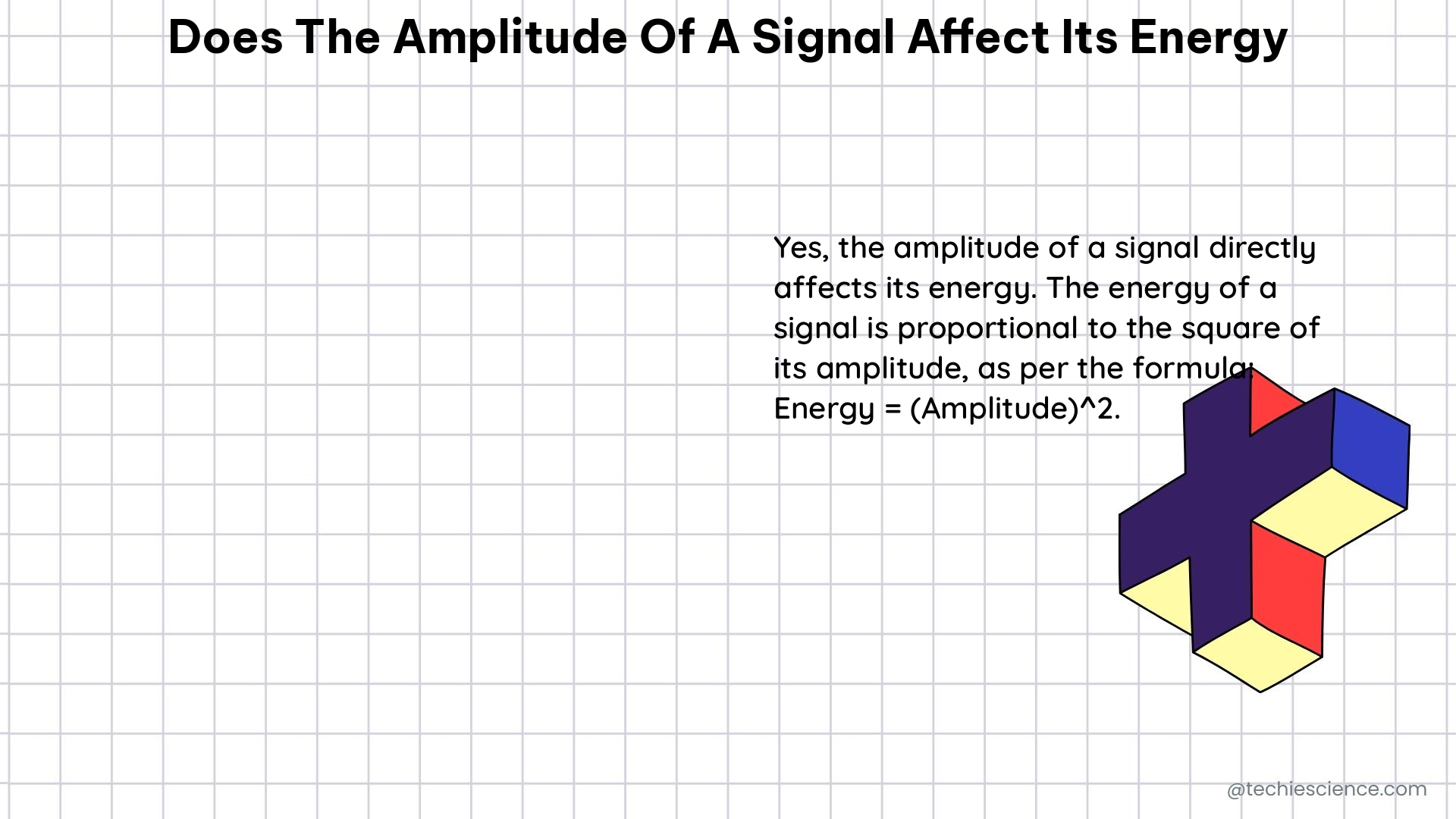The amplitude of a signal is a crucial parameter that directly affects the energy carried by the signal. This relationship is fundamental in the field of signal processing and is essential for electronics students to understand. In this comprehensive guide, we will delve into the technical details and explore the various aspects of how the amplitude of a signal impacts its energy.
Understanding the Amplitude-Energy Relationship
The amplitude of a signal is the maximum deviation of the signal from its resting or equilibrium position. The energy of a signal, on the other hand, is the measure of the total work done by the signal over a given time interval. The relationship between the amplitude and energy of a signal is expressed mathematically as:
E ∝ A^2
Where:
– E represents the energy of the signal
– A represents the amplitude of the signal
This equation indicates that the energy of a signal is directly proportional to the square of its amplitude. In other words, a doubling of the amplitude results in a quadrupling of the energy, a tripling of the amplitude results in a nine-fold increase in energy, and a quadrupling of the amplitude results in a 16-fold increase in energy.
This relationship holds true for both time-domain and frequency-domain signals. In the time domain, the energy of a signal is calculated by integrating the square of the signal over the time interval. In the frequency domain, the energy is proportional to the square of the amplitude of the spectrum.
Practical Examples

To better understand the impact of amplitude on energy, let’s consider some practical examples:
- Waves in an Inert Gas Container:
- Consider two waves, Wave A and Wave B, traveling through a container of an inert gas.
- Wave A has an amplitude of 0.1 cm, while Wave B has an amplitude of 0.2 cm.
-
According to the amplitude-energy relationship, the energy transported by Wave B must be four times larger than the energy transported by Wave A.
-
Ocean Waves:
- Suppose an ocean wave has an amplitude of 2.5 m.
- If the amplitude of the wave suddenly increases to 5.0 m due to weather conditions, the amount of energy transported by the wave will quadruple.
These examples illustrate the direct proportionality between the amplitude and energy of a signal, which is a crucial concept for electronics students to grasp.
Implications for Signal Processing Systems
The relationship between the amplitude of a signal and its energy has significant implications for the design and analysis of signal processing systems. Understanding this relationship is crucial for:
-
Accuracy and Resolution: The energy of a signal is directly related to the amplitude, which means that changes in the amplitude can significantly impact the accuracy and resolution of measurements taken in a signal processing system.
-
Dynamic Range: The dynamic range of a signal processing system is the ratio between the maximum and minimum signal levels that can be handled without distortion. The amplitude-energy relationship is essential in determining the appropriate dynamic range for a system.
-
Power Considerations: While the energy of a signal is proportional to the square of its amplitude, the power of a signal remains constant regardless of the sampling rate or amplitude. The energy is equal to the power multiplied by the sampling time.
-
Optimization: By understanding the amplitude-energy relationship, electronics students can optimize their signal processing systems to achieve the desired performance, accuracy, and resolution.
Conclusion
In summary, the amplitude of a signal directly affects its energy, with the energy being proportional to the square of the amplitude. This fundamental relationship is crucial for electronics students to understand, as it has significant implications for the design and analysis of signal processing systems. By applying the principles of energy transport and the amplitude-energy relationship, students can better comprehend the behavior of signals in different contexts and optimize their systems accordingly.
References
- Physics Tutorial: Energy Transport and the Amplitude of a Wave, https://www.physicsclassroom.com/class/waves/Lesson-2/Energy-Transport-and-the-Amplitude-of-a-Wave
- Relationship between energy, power and sampling rate, https://dsp.stackexchange.com/questions/85745/relationship-between-energy-power-and-sampling-rate
- Measuring the Amplitude of the Signal, https://blog.endaq.com/measuring-the-amplitude-of-the-signal
- Amplitude And Energy Correction – A Brief Summary, https://blog.prosig.com/2009/09/01/amplitude-and-energy-correction-a-brief-summary/

The lambdageeks.com Core SME Team is a group of experienced subject matter experts from diverse scientific and technical fields including Physics, Chemistry, Technology,Electronics & Electrical Engineering, Automotive, Mechanical Engineering. Our team collaborates to create high-quality, well-researched articles on a wide range of science and technology topics for the lambdageeks.com website.
All Our Senior SME are having more than 7 Years of experience in the respective fields . They are either Working Industry Professionals or assocaited With different Universities. Refer Our Authors Page to get to know About our Core SMEs.